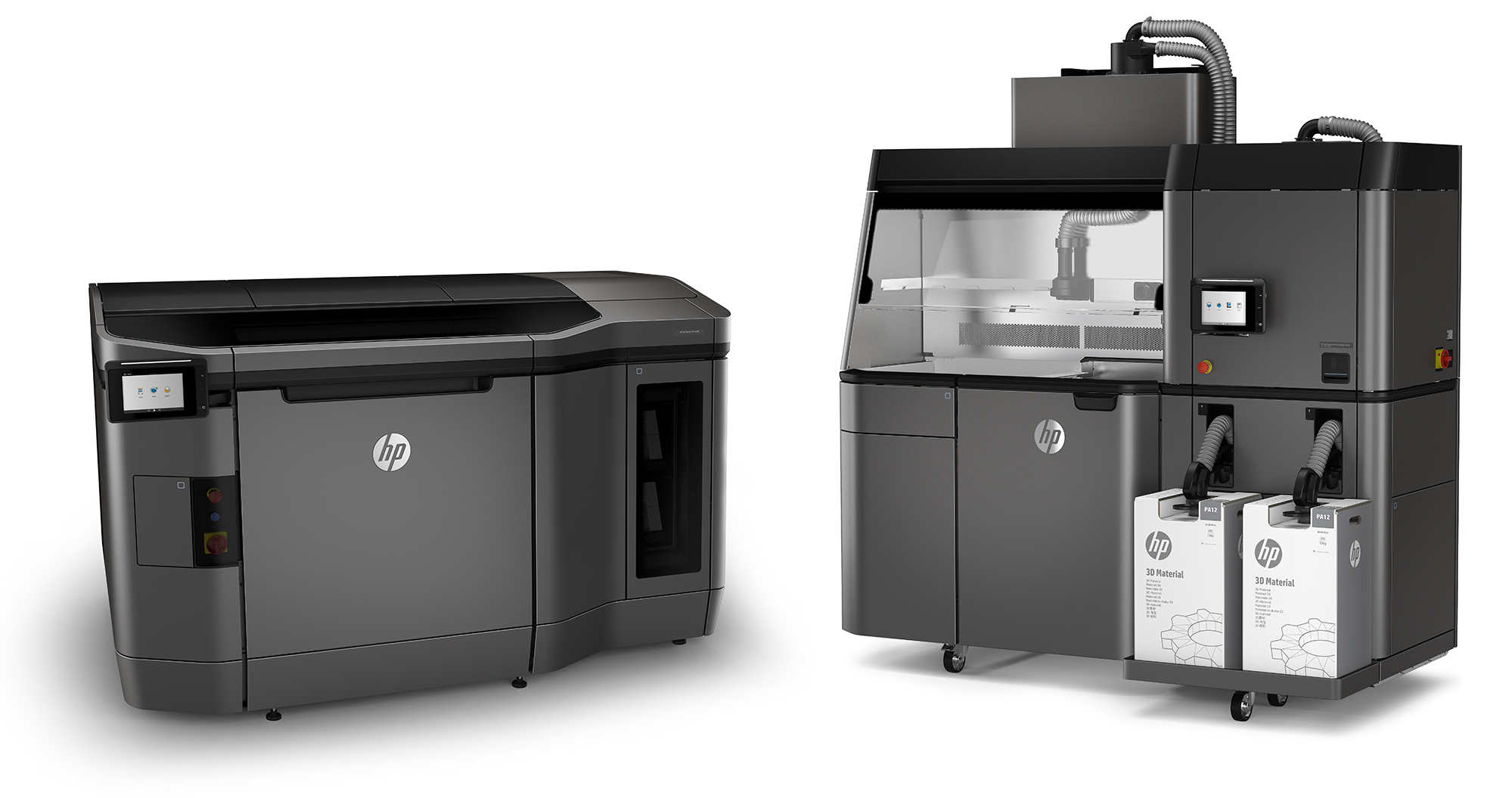
HP finally announced details about their new Jet Fusion 3D printers, but I have a number of questions.
As we reported earlier, the two HP Jet Fusion 3D printers, the 3200 and 4200 models, offer some very interesting capabilities, including the ability to control materials by voxel! That, plus an unusual way to split the processing between two machines to increase overall machine output.
But I have some questions, and they mostly orbit around materials.
We don’t know the price of the materials, but as one might expect from a company that largely makes its money on high-priced inkjet supplies, it wouldn’t be surprising if HP priced their Jet Fusion materials at premium levels.
But at first, at least, the Jet Fusion machines will have but one material available: PA12, a type of nylon frequently used in other powder-based 3D printers.
For a machine that can evidently control the material by voxel, it’s not going to be doing that if there is only one material available.
However, HP does say they have many other materials in the works, including flexible and glass materials. But it’s not clear when they will be available or whether the 3200 or 4200 machines will be able to use more than one material. They’re also working on multicolor and conductive materials.
Regarding the use of materials, HP says:
Our unique Open Platform approach will reduce 3D printing adoption barriers by improving materials diversity and performance, and ultimately reducing materials cost.
Wait a second – are they saying the Jet Fusion machines will actually be “Open”? As in “use any materials you can”? Materials “diversity” could certainly be accomplished by permitting use of generic or experimental materials. However, I sincerely doubt that HP would permit such usage, and I fully expect their premium priced powder cartridges to be electronically chipped to the machinery.
We also really don’t know anything much about the actual operability of this machine: How reliable is it? How frequently must maintenance procedures be done, and how expensive is that? What are the prices of replacement parts? What wears out first? Does the software actually provide an easy-to-use experience? Does the machine produce audit logs for billing? The answers to these questions could be positive, but we just don’t know yet.
There’s also a question of applicability. HP claims the machine is “up to 10X” and “half the cost” faster than comparable machines, but there are some qualifications to that statement:
Based on internal testing, HP Jet Fusion 3D printing solution average printing time is up to 10 times faster than FDM and SLS printer solutions from $100,000 USD to $300,000 USD on market as of April 2016. Testing variables: Part Quantity: 1 full bucket of parts from HP Jet Fusion 3D at 20% of packing density versus same number of parts on above-mentioned competitive devices; Part size: 30 g; Layer thickness: 0.1mm/0.004 inches. Fast cooling module available in 2017 with some models will further accelerate production time.
Based on internal testing and public data, HP Jet Fusion 3D average printing cost per part is half the cost of comparable FDM and SLS printer solutions from $100,000 USD to $300,000 USD on market as of April 2016. Cost analysis based on: standard solution configuration price, supplies price, and maintenance costs recommended by manufacturer. Cost criteria: printing 1-2 buckets per day/ 5 days per week over 1 year of 30-gram parts at 10% packing density using the powder reusability ratio recommended by manufacturer.
If you just happened to be making parts with those characteristics and at that frequency, you could expect to see such savings and speed increases.
But are you? The thing with 3D printing is that every machine has constraints of one kind or another, and that you must select a machine that best matches your particular requirements. Everyone’s needs and speeds are quite different and your mileage may vary on the HP equipment, as it will on any machine.
There is no doubt that there are indeed customers whose requirements match the Jet Fusion offerings, but are there enough for HP to make a profit on this venture? Based on the amount of money HP must have spent to develop this technology, they must be confident there are.
Via HP

